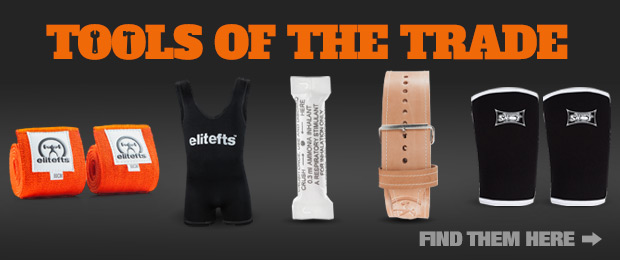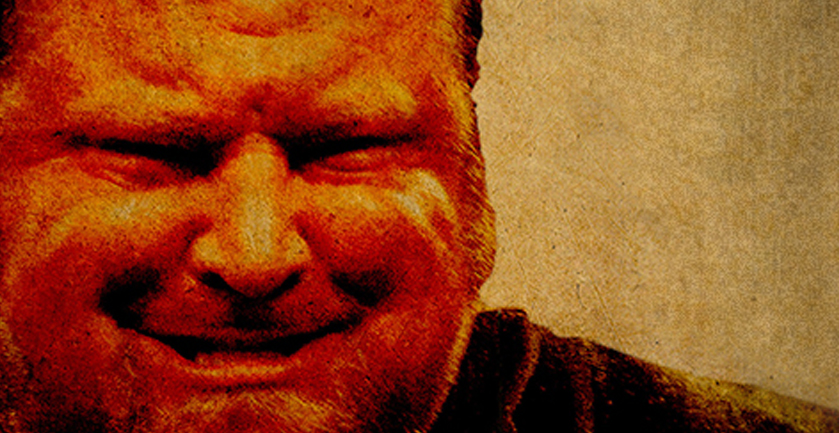
As everyone that reads my column knows, I rate technique very high on my list of priorities. This holds true for myself and the lifters I coach. For this reason, I have spent a lot of time learning both raw and geared techniques.
I will admit the debate between the two has faded a bit as of late and is probably due to the popularity of raw lifting. Still, it seems to continue to come up, and even as I write this article, I know there are going to be some people who will not change their minds no matter what I say. Some people just enjoy arguing too much. Either way, I stand behind my years of experience when I say they are not that different.
RECENT: Chad vs. The World: Redefining Dedication
One of the best things I did when I got serious about powerlifting was to recognize how important technique is. I put a tremendous amount of energy and time into learning about it and improving my own. Even to this day, I am still working hard at learning more about technique. I continue to keep an open mind to new ideas or concepts about technique. I do this for myself and for the clients I coach. I could rest on my lifting accomplishments and feel that I already know it all, but I don’t. This is especially true of technique because I understand just how vital it is for anyone that trains with weights. I rate technique so high I feel it precedes any training programs or styles.
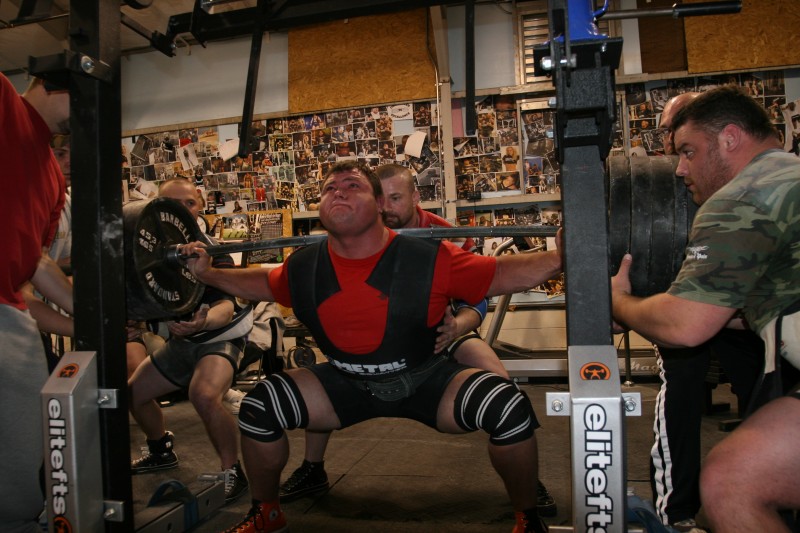
Without solid technique, even the greatest program in the world will not work as it should. I see too many lifters in gyms that are lifting less than they actually have the strength to lift or struggle with weights that should be easy for them simply because their technique is horrible. No matter what you choose to lift with or in, technique is the key to a solid foundation of future goals.
The other day, I was coaching squats when a guy in the gym stopped and started explaining that I was teaching raw lifters a geared style of lifting. I turned and said, “They really are not that different!”
I was fully committed to explaining why, but I guess my eyes turned black or something because he just walked away. Ironically enough, this guy seemed to be a pretty strong lifter — at least in his deadlifts, which were super wide and in the exact position of a geared deadlift. I did not get to see his bench technique, but it looked like he was hitting a decent lift there, too. Not sure why he trained deadlifts and bench on the same day, though.
For some reason, many lifters want to separate raw and geared lifting. They are different sports when it comes to the best ways to train for them or competing in them. That being said, I can find a lot of similarities that cross over in all aspects. As for the technique, there are way more similarities than differences to me. Technique is about the efficiency of movement and using the muscles or groups with the greatest capacities. The basic principles of technique hold the same in raw or geared.
I think the lift with the biggest differences is the bench press. This can really vary depending on the brand and type of shirt you are wearing, though. Bench shirts are set up differently to accommodate all types of techniques and styles. Generally, the biggest difference I see is the angle of the upper arm and where the weight touches. In the style of open back shirts like I wore, you wanted to keep the elbows tucked into your side as hard as possible and touch on the upper belly (sometimes as low as mid-belly, depending on the person). This makes sense in a shirt because it gives much more support in the shoulders. It also gives you the most rebound in this position. I have benched in the 900s this way in my shirt.
WATCH: Joe Sullivan's Knee Wrap Tutorial for Raw Lifters
At the same time, I could bench over 600 pounds raw on the very, very rare occasions I went heavy raw. The only real difference in my technique was that I let the elbows out just a little and hit higher on my belly. These days I train mostly raw and have not had a bench shirt on in too many years to remember. I also have way more time to experiment with my training and technique because I am not always preparing for a competition.
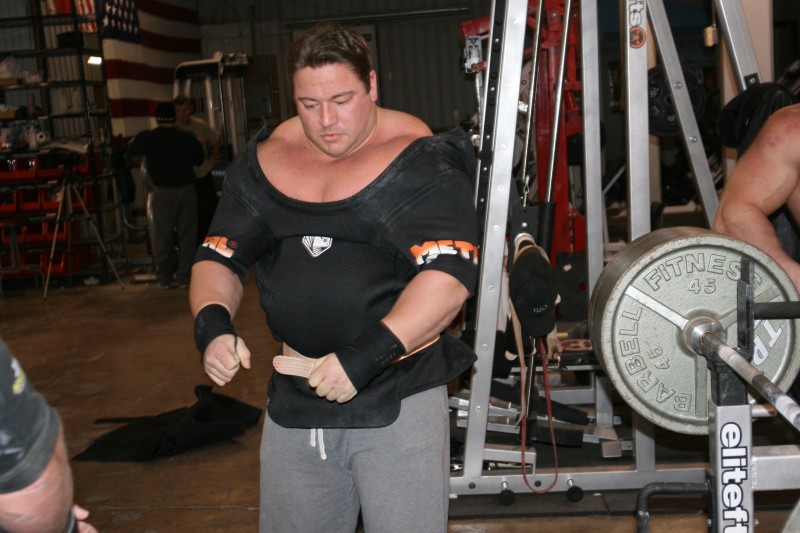
I found if I use my bench shirt technique, it ends up putting a lot of stress on my anterior shoulders. The strongest raw position for your arms is to be at 45 degrees from your body and hit the top of the belly (abs for you lean guys). Every single other part of the technique is completely the same.
The wrists are stacked over the forearms, and the shoulders are pulled down toward your butt with your lats. The shoulder blades are retracted to start and on the eccentric phase. The bar path is a small arc on the eccentric and concentric phases. The wrist and forearm should be stacked perpendicular to the ground the whole movement. There should be a strong brace with rooted feet pushing the glutes into the upper back. There is more to it, but raw or geared, it is pretty much the same with the only real difference being the angle of the upper arm and where the bar touches.
The squat has very little differences that I can see, too. One of the biggest differences I hear is that raw lifters cannot go as wide as geared squatters. I seriously beg to differ on this one. When I was competing heavy, we rarely spent much time going heavy raw. When we did, I saw my training partner go over 800 raw in the very same stance he did with his gear on — as wide as possible in the monolift.
Yes, the squat suits and briefs give you much more support in the hips and can allow lifters to go much wider. The reason most lifters say they cannot go as wide without gear is simply a matter of strength and training. Most lifters that try to go wide without gear have simply not put in the work to strengthen their hips to be able to handle going wide raw. They jump to going wide and immediately say it feels like shit and give up on it instead of taking the time to build the hips.
Another thing I hear is that raw lifters can’t or shouldn’t sit back so far. Again, I beg to differ. Sitting back is a much more efficient style that allows greater use of the posterior chain. It is also much easier on the knees. However, if you do have a narrower stance, it is almost impossible to keep the shins straight up and down. There is a point where the knees may come forward some. This is perfectly OK.
There are some who say this way lets you incorporate a bit more quad with the posterior chain. I think there is some validity to this theory. What is most important to me is that the weight is spread through the whole foot with slightly more on the heels while still keeping the knees from going to or past the ball of the foot. Along with this, the heels should never leave the floor.
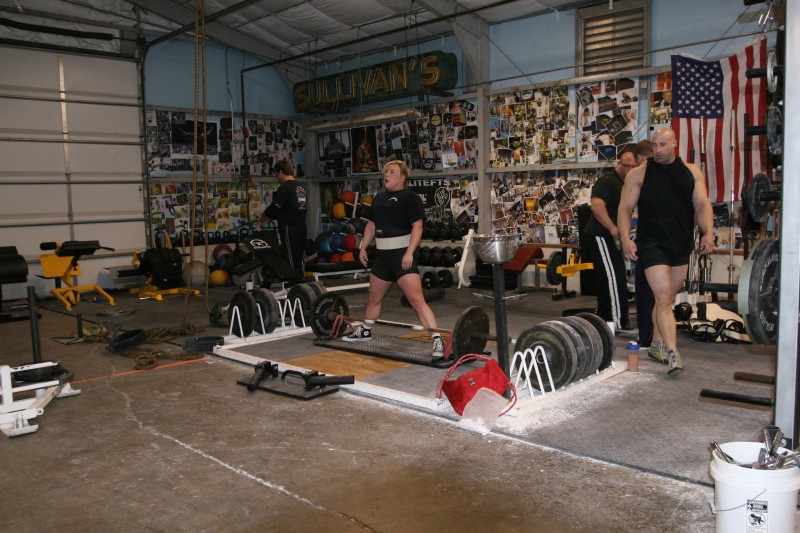
Before powerlifting, I was a quad squatter, and even after all my years sitting back, I still have big strong quads. The quads get used, even when sitting back. The wider you go, the more efficient the movement can be, and the more you can keep the shins parallel. So again, the vast majority of this lift is the very same raw or geared.
RELATED: The Dogg Shitt Method™ 12-Week Powerlifting Program
Now on to the deadlift, which I think should be performed with exactly the same technique, sumo or conventional or in or out of gear. All you have to do to believe this is look at the top deadlifters, both gear and raw. They have very similar, if not exactly the same, technique.
It always seemed funny to me that lifters who think gear and raw are completely different rarely mention the deadlift. I get that one has the bar on their back and the other bar is in their hands, but really these lifts are very similar in themselves. I know my sumo squat and my deadlift look very close to each other. Same for a narrow squat and a conventional deadlift. So why is it so hard to believe the technique of the squat should be so different between raw and gear?
Geared lifting or raw lifting? Who cares? Either way, it is lifting weights. They both have their place along with their own pluses and minuses. In fact, I believe they actually complement each other. Each one has helped the other one advance in strength. The point here is that technique is extremely important when it comes to reaching your best.
Stop criticizing and take the time to learn what you can from everything. The basic principles of technique in the three main lifts go for both gear and raw. As you advance in either realm, there may be little tweaks to get all you can out of the lift, but the basic principles always stay the same.










